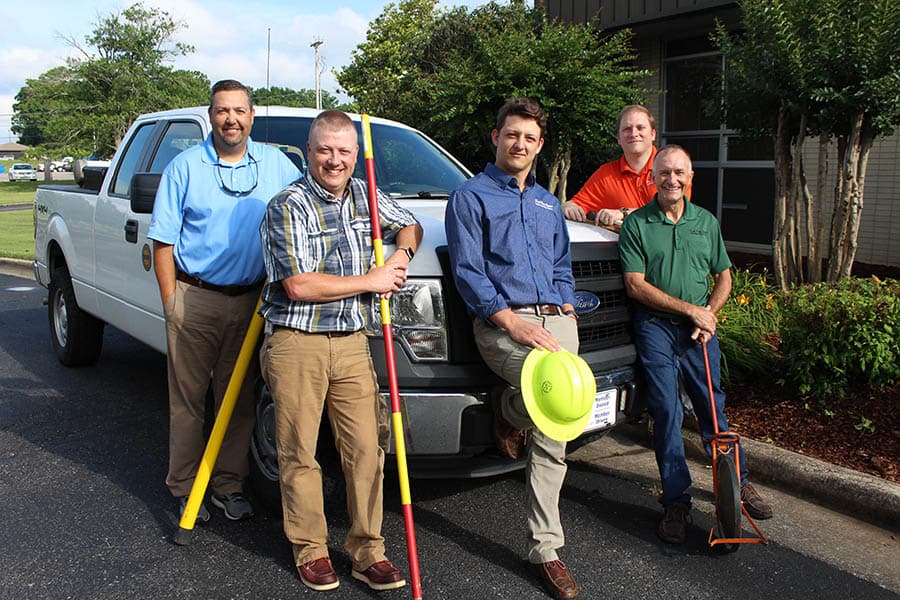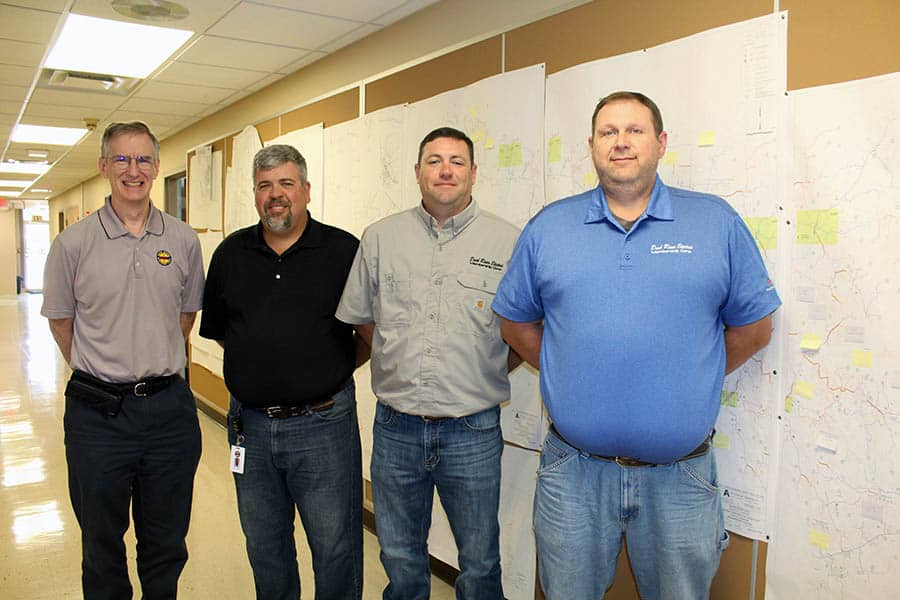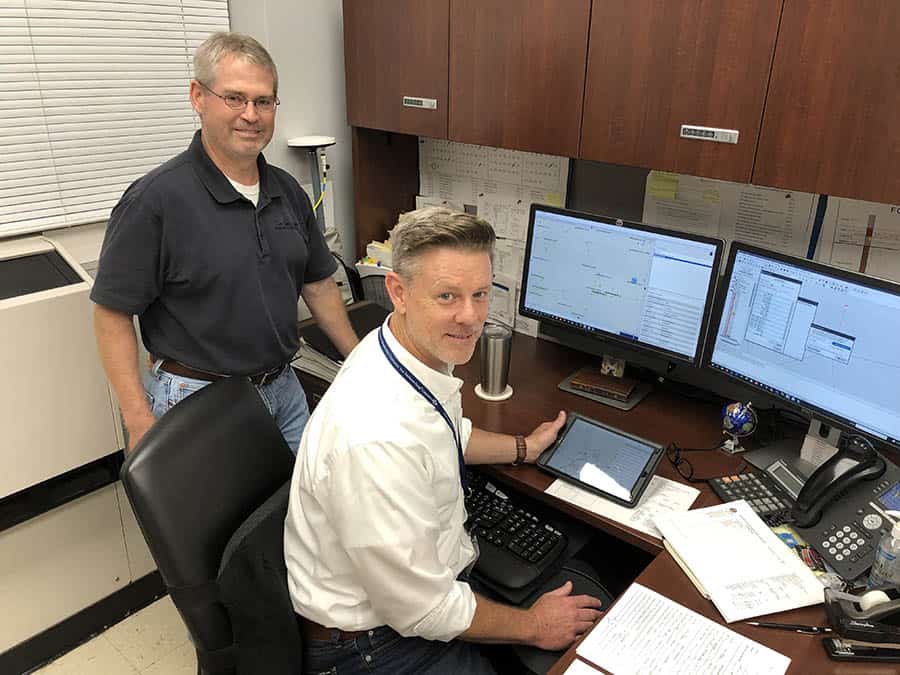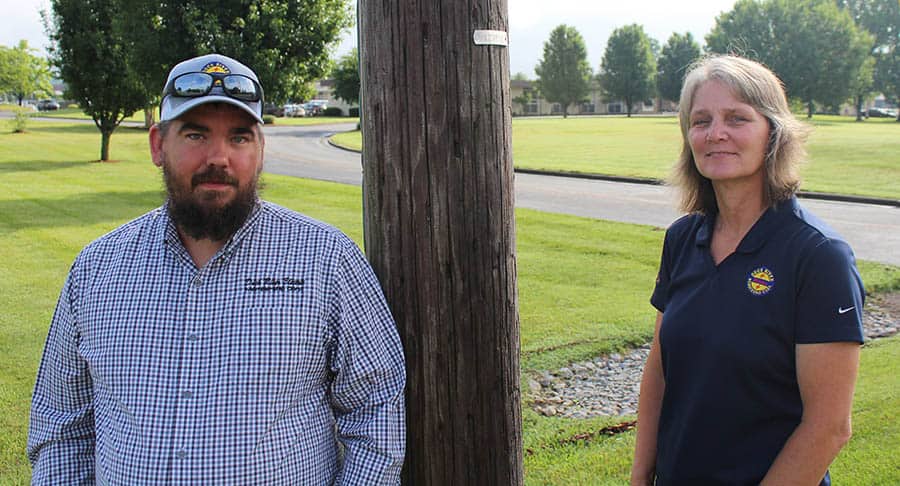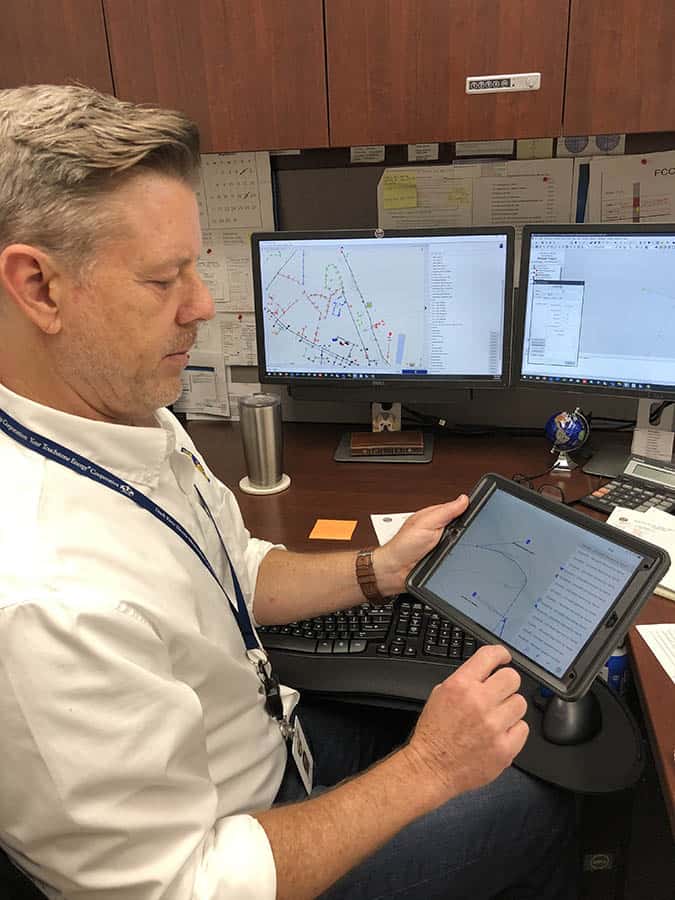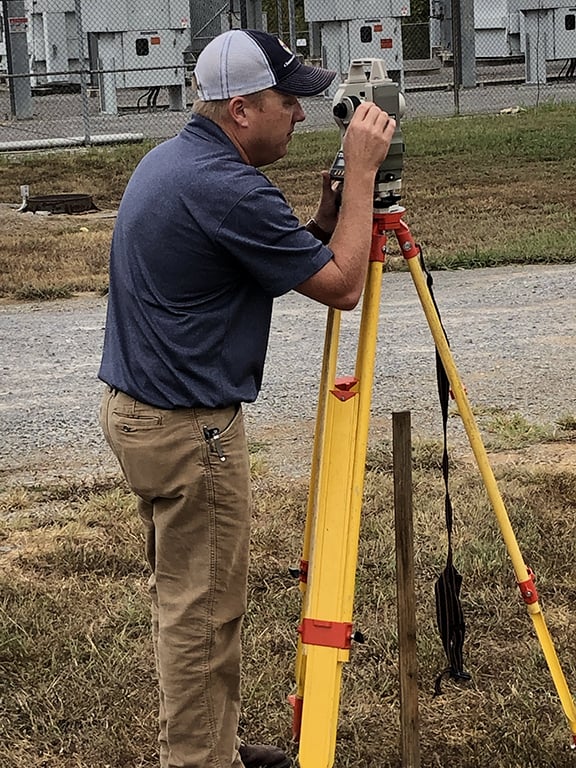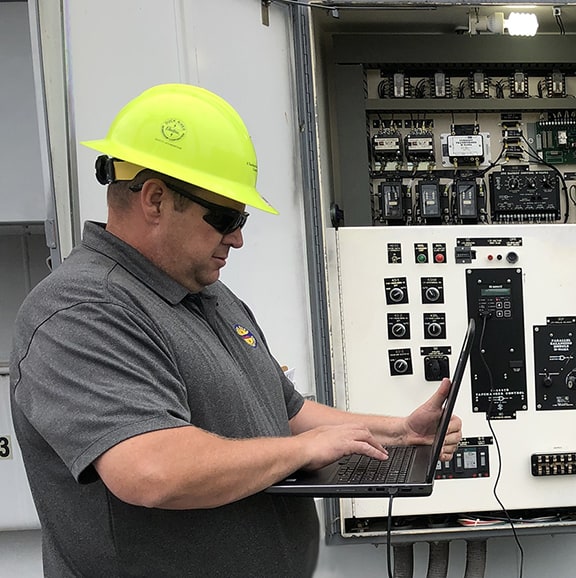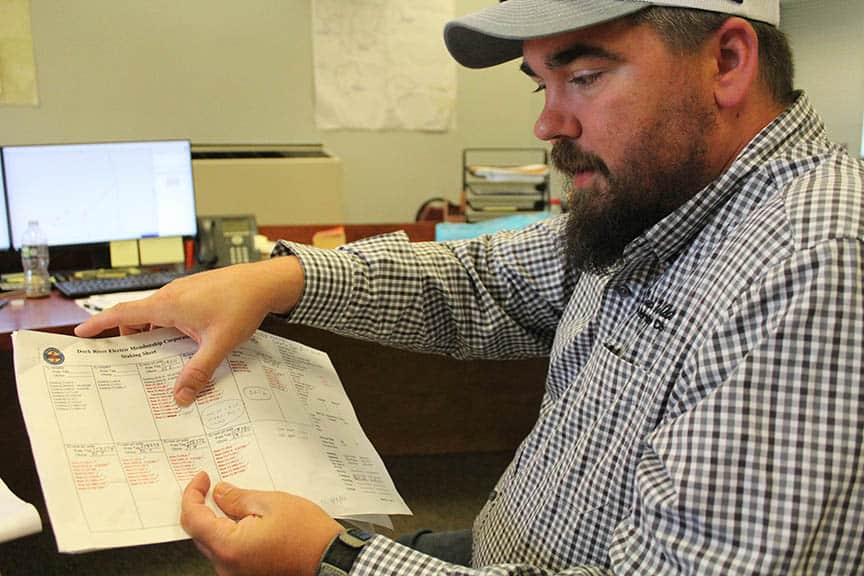“We have the technology. We have the capability. We can make it better than it was before. Better, stronger, faster.” These borrowed excerpts from the introduction of the 1970s TV series Six Million Dollar Man seem to apply to this month’s focus on The People Who Power Duck River Electric – the engineering and line inspection teams.
Although these two teams have different responsibilities, they have a common goal – building and maintaining the electric system through better technology and improved processes that strengthen DREMC’s distribution system infrastructure.
Billy Tiller, vice-president of engineering, is an electrical engineer and has been with DREMC for two years. He brings 32 years of engineering experience to DREMC, which includes transmission planning for the Tennessee Valley Authority.
“The engineering team works from the minute someone needs power at a new location up until the line is built to the home or business,” Tiller shared. “At times, designing new electric construction is simple, and at other times, the design requires a larger system upgrade to provide the amount of power needed to serve a new industry,” he said. “The engineering team determines the best solution at the lowest cost for all new electric construction.”
“Electric construction is busy now, but I expect it will get even busier as residential growth, mainly in the Columbia, Spring Hill, and Chapel Hill areas, continues at a fast pace. We’re also seeing new construction along Highway 231 in Bedford County, ” Tiller adds.
Electrical Engineers Josh Weldon, Ed Cashion, Patrick Hannah, and Chuck Snell each have specialized responsibilities that support the engineering team. Weldon’s main focus is securing reliable power supply for DREMC’s commercial and industrial members; Cashion coordinates DREMC’s SCADA system (Supervisory Control and Data Acquisition) and monitors DREMC’s 30 substations while planning for future system needs; Hannah works on the overall system planning for upgrades to enhance reliability in all areas DREMC serves; and Snell helps manage the cooperative’s GIS system (Geographic Information System) that documents over 80,500 service locations for homes and businesses, plus other electric equipment on the system.
“I generally meet with DREMC’s commercial and industrial members to help determine what it will take to get power to the new or expanding facilities,” said Weldon. “Several of us on the engineering team meet with subdivision developers to design electric construction. These types of developments will include anywhere from 50 to 250 homes, and many of them include underground electric services.”
Cashion describes his role as making sure DREMC can supply enough energy from the electric substations to the distribution system that spans from one end of the service area to the other. “This is critical during the system’s winter peak where DREMC’s electric load can reach up to 500 megawatts of electricity to power the demand needed to heat homes and businesses when the temperatures plummet close to zero,” Cashion shares. “On average, our load runs about 200 megawatts. For this reason and others, monitoring power delivery is important for securing system reliability.”
Part of Hannah’s job is evaluating DREMC’s infrastructure and developing the large-scale, four-year work plan for system upgrades. “One of the biggest challenges we face is prioritizing system upgrades that are needed to get ahead of community growth,” said Hannah, who has been at DREMC for 20 years. “We must be proactive in evaluating everything before making a decision on which area is more urgently in need of additional electric infrastructure to supply power and support the growth that local communities are experiencing.”
“After a while, you literally can see the progression of the electric system,” Hannah adds. “For instance, in the Port Royal area of Maury County, our team helped design the electric line for the first subdivision there. Now, because of the continued growth in this area, we are looking at several solutions for supplying electricity to support the increasing electric load in this area.”
Snell works with Robin Cornelius, GIS drafting specialist, and maintains the system’s GIS model, which is vital to DREMC’s outage management system and used by the engineering team, line crews, and member service representatives. Snell not only helps to continuously update the GIS system but also writes customized programs to generate special reports, or “works his voodoo,” as Cornelius comically describes, to aid other DREMC teams with gathering and comparing service location data.
“The mapping system is layered and allows employees to see everything installed on the system, or they can select options to see only where outdoor security lights are installed, for instance,” said Snell. “If they need to locate where a specific transformer number is installed, the GIS mapping system makes that type of information easily accessible.”
Cornelius explains that the benefits of having accurate mapping information available through the GIS system is valuable to all who use the technology. “Having the system’s mapping, GPS, and GIS systems in their hands with the iPads has proven to speed outage response by accurately displaying specific line sections and equipment,” he said. “It’s all at their fingertips now.”
He also shares that district and field engineers utilize the GIS system to view existing infrastructure and to stake GPS coordinates for new lines and services.
According to Tiller, when severe storms affect the system, the engineering team accompanies electrical contractors and other electric crews that assist DREMC with power restoration. The engineering team serves as ‘bird dogs’ to help spot damaged poles and equipment to help ensure the system is rebuilt according to DREMC specifications.
DREMC has five system engineers, Anthony Allen, Chris Wade, Luke Davidson, Randy Ridner, and Ryan Adcock, who split the service area into east and west sections to support construction needs more efficiently for systemwide growth. According to Allen, system engineers oversee several tasks daily: construction requests, permit processes, easements for new construction, work order approvals for all DREMC offices, construction cost analyses, voltage conversions, and more. They also aid DREMC’s district engineers by working with them to maintain consistency for electric construction across the service area.
“Much like the line crew, DREMC engineers understand how the system is built and how power is fed to the circuits throughout the service area,” said Allen. “Our team is most helpful to the crews during outage restoration by assisting them with quickly locating and documenting the damaged equipment, which enables the efforts to be more efficient when it really counts.”
“During an outage, it gets really quiet and dark in the hollows at night,” shares Ridner, as he remembers the events of the latest ice storm. “After working late into the night, and you radio the office that the area can be reenergized, you can watch the wave of lights coming on in the hollow, one house after the other. It happens in the blink of an eye, but it’s an amazing sight! And the only thing better is hearing the happy shouts of the people from inside those homes when their lights come back on.”
Ridner has been at DREMC for six years, and before joining the engineering team at the headquarters office, he served as the district engineer in Manchester. Most of Ridner’s time has been devoted to mapping and documenting DREMC’s fiber ring construction that now connects the cooperative’s substations to enhance communications and outage response. With DREMC’s fiber ring construction completed, Ridner will focus on electrical construction.
“Managing the workflow from the time we receive the requests for new construction and system upgrades, our team is responsible for getting the plans into the hands of the crews so that members have electric service as quickly as we can build it for them,” said Allen.
Wade admits that he didn’t realize that so much went into the planning process of building a power line before he began working at DREMC in 2007. “To most, one power line and its pole-top construction look the same as the next,” he said, “but they’re very different when you consider angles, clearances, and overall construction of the structure. Each part of the construction is designed by the engineering team.”
Davidson originally joined DREMC in 2018 as an intern while completing his studies at Motlow State Community College. “I like everything about my job, especially being out in the field and doing all I can to serve the members,” he said. “Much of our work is behind the scenes, but you can see the results of our team’s work each time you see a power line being built somewhere.”
Adcock began working at DREMC in 2016 as a contracted collector in the Shelbyville office. Three years later, he was hired as the cooperative’s drafter before filling his current role. As Adcock explains, “A lot of planning and work goes into making sure enough electricity is delivered to homes and businesses to power lights, appliances, large equipment, heating, cooling and even their cell phones each night.”
“All that we do as a team is member-driven,” said Shelby Pihs. She and Tabatha McCroskey are the engineering coordinators who put the finishing touches on several jobs that enter the engineering department.
“We see constant activity and growth on our system, from new services being built to line transfers,” states McCroskey.
“It’s not unusual for us to process 150 work orders each month while maintaining, preparing, and processing different engineering tasks,” admits Pihs. “Each task requires accuracy, so there’s lots of checking and double-checking before our job is complete.”
“With improved processes and new technology, we’ve been able to eliminate previous tasks that were duplicated or outdated and still maintain accurate engineering records for all employees to access as needed,” adds McCroskey. “We archive lots of detailed information, too. The engineering department has electrical construction information dating back to the 1930s!”
The story doesn’t end there. After a while, electrical construction must be inspected to maintain service reliability and safety. This is where Melanie Coate and Ben Hullett come in as DREMC’s line inspections team.
Coate, DREMC’s reliability program supervisor, oversees the progress of the contracted pole inspection crew, Osmose, and regularly sends updates to the eight DREMC offices regarding any poles found in need of minor repairs to complete replacement. Regular inspections ensure the solidity of more than 122,000 wooden poles systemwide. DREMC’s line inspection program investigates every pole approximately every 10 years.
Poles are tested using what Coate describes as a “hammer test” above ground and a “drilled” inspection below ground to find any weaknesses and damage to the structures. If poles are found to have any deficiencies making them unsafe for linemen to climb or increasing the potential for outages caused by equipment failure, those poles are repaired or replaced.
“Over time, a wooden pole can become damaged by anything from the aging process to woodpeckers,” said Coate. “On average, each year we inspect 10,000 to 11,000 poles systemwide, and approximately 8 percent of those poles are found to need replacement.”
With the increased cost of materials, DREMC is implementing a more modern approach for wooden pole replacement – utility pole trusses. Although this approach won’t work for all poles in need of maintenance, the truss installation is proven to reduce the costs of pole replacement while keeping line workers safe.
Hullett, the program support specialist, inspects line construction performed by contract crews to ensure their work meets the cooperative’s engineering specifications.
Hullett began working at DREMC in 2008 with the engineering department, updating the mapping system and drafting a spec book for pole construction and the related hardware. “Working previously with the system’s engineering maps has been very helpful in my current role at Duck River,” he said. “I now see how the spec designs that we created over the past 10 years are being used in the field for new electric line construction.”
“By ensuring that poles and lines are inspected, what Ben and I do supports DREMC’s commitment to system reliability and the safety of the members and employees alike,” adds Coate.
“These two teams are dedicated to the overreaching effort for ‘better, stronger, faster’ improvements of the electric system,” Tiller said. “Each improvement made is a step in the direction of securing the delivery of low-cost electricity to today’s members while planning for the future needs of the communities we serve.”


